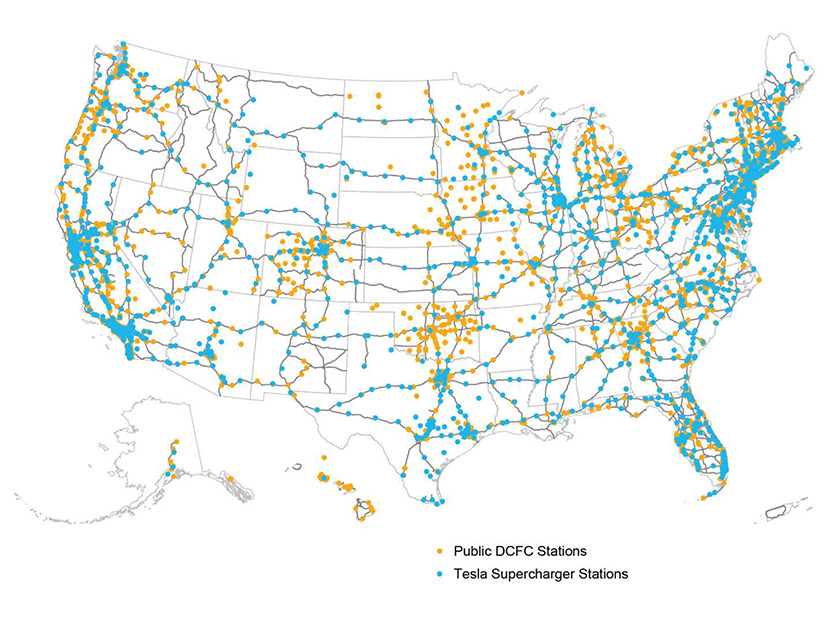
A five-year, $5 billion effort to establish a nationwide network of public EV chargers along designated highway corridors is pushing ahead as planned, according to a report on the first year of the National Electric Vehicle Infrastructure (NEVI) program.
The effort, launched in February 2022, required states to file their EV charging plans by Aug. 1, 2022, a relatively quick turnaround.
The Joint Office of Energy and Transportation received all 52 state plans by the deadline and the Federal Highway Administration approved them within two months, “unlocking $1.5 billion in funding for states to begin building charging stations through the NEVI formula program,” the report said. (See States File Plans on Deadline for EV Charging Funds.)
(The Joint Office was created through the Bipartisan Infrastructure Law in 2021 to foster collaboration between the Department of Energy and Department of Transportation.)
The largest recipients of the $1.5 billion funding in 2022/23 were Texas, which received $147 million, and California, which was awarded $138.5 million.
The Joint Office’s analysis showed that “most states already have adequate funding to become ‘fully built out,’” with EV chargers every 50 miles along 75,000 miles of designated alternative fuel corridors. Those corridors include 92% of the nation’s 48,000 miles of interstate highways and a third of the 230,000-mile National Highway System.
“Once fully built out, up to $3.5 billion in funding could be available for EV charging beyond designated corridors,” the report said.
As of March, 679 charging stations in the corridors met NEVI requirements for distance between stations and had sufficient charging ports and capacity, the report said.
The multi-year effort still has room for improvement in the areas of procurement, station siting, cybersecurity, program evaluation and community engagement, it said.
“These topics will be emphasized in technical assistance provided by the Joint Office,” it said.
Among the issues still to be worked out is the type of chargers required at NEVI sites.
There has been increasing concern that the North American Charging Standard (NACS) connectors used by Tesla are quickly becoming the national standard while federal NEVI guidance requires charging stations to be equipped with the rival combined charging system (CCS) connectors. (See EV Charging Efforts Ramp up on West Coast.)
In the past two months, automakers including Ford, General Motors, Mercedes, Rivian and Volvo have announced they plan to adopt Tesla’s NACS connector as Tesla begins opening its Supercharger network to non-Tesla vehicles.
Another question is how the U.S. will install the vast number of chargers needed to support a switch to electric vehicles.
While NEVI’s $5 billion is meant to jump-start the effort, a study by the National Renewable Energy Laboratory estimated that the U.S. needs 1.2 million public charging stations to support 33 million light-duty vehicles by 2030, the report noted. That will require 28 million charging ports, both public and private, and cumulative investments of $53 billion to $127 billion, it said.

